Maryland, one of the two states in the country to flip from majority White to majority non-White over the last decade, is now the most diverse state on the East Coast, according to new data from the 2020 Census. Meanwhile, the District of Columbia continued to lose Black residents – an exodus that has accelerated over the last 10 years.
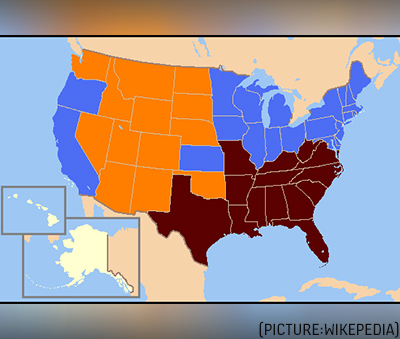 Overall, the region’s population grew by 12.9% to 6.6 million, less than in past decades. Loudoun County led northern Virginia and the metro area with an increase of 38.4%, while in the Maryland suburbs of D.C., Howard County grew the most, 15.8%.
Overall, the region’s population grew by 12.9% to 6.6 million, less than in past decades. Loudoun County led northern Virginia and the metro area with an increase of 38.4%, while in the Maryland suburbs of D.C., Howard County grew the most, 15.8%.
Keeping with national trends that saw the number of White people in the U.S. fall and the White share of the population dip below 60% for the first time since 1790, population growth in the D.C. region has been driven largely by people of color.
According to the U.S. Census Bureau’s diversity index – which measures the likelihood that two people chosen at random would be from different racial and ethnic groups – Maryland is now one of the most diverse states in the nation, surpassed only by Nevada, California and Hawaii.
Nevada also was the only other state in the country to become majority non-White over the last decade. The change in Maryland’s demographic makeup was driven by growing Asian and Latino populations in the District’s inner suburbs and areas around Baltimore. Prince George’s County grew 12% to 967,000.
In northern Virginia, which helped drive population growth for the state overall, Alexandria grew 14% to 160,000 and Arlington grew 14.9% to 239,000. Fairfax grew 6.3% to 1.2 million and Prince William grew 20% to 480,000.
Amid this decade of growth, Fairfax, Prince William and Loudoun saw significant declines in their White population over the last 10 years. Loudoun, in particular, went from 62.4% White in 2010 to 51.5% in 2020.
Fairfax is the latest D.C. suburbs to become majority non-White, joining Prince William in Virginia and Howard, Montgomery and Prince George’s in Maryland.
The only jurisdiction in the area where the White share of the population increased over the last decade was the District.
The city is now Whiter than it has been in more than half a century. The number of residents who identify as White increased 25% since 2010, and in 2020 accounted for 38% of the population, narrowing the gap with the District’s Black population, which declined by nearly 19,000 or 6.3%.
In the place still known by many as “Chocolate City,” just 40.9% of the population identified as Black in the 2020 count – the smallest%age since the 1950 Census when 35% of the District’s population was Black.
Black Washingtonians are still the largest racial group in the District, according to Census numbers, but gains in the White and Hispanic populations drove the city’s overall population growth of 14.6% – or nearly 88,000 people – since 2010.
News assistants run outside the U.S. Supreme Court after the court ruled that U.S. President Donald Trump’s administration did not give an adequate explanation for its plan to add a citizenship question to the 2020 census, delivering a victory to New York state and others challenging the proposal in Washington, U.S., June 27, 2019. REUTERS/Carlos Barria
Andrew Trueblood, the director of the D.C. Office of Planning, said the numbers came as a surprise to District officials and raised questions about the veracity of the 2020 estimates. He and other D.C. officials had been tracking Black population data, including by using estimates from the American Community Survey. The 2020 population numbers, he said, do not seem to match those projections.
“We knew the District of Columbia was at risk of an undercount – and that’s regardless of what happened in the world with a global pandemic,” Trueblood said. “We have a lot of concern that our most vulnerable residents were not counted.”
District officials will be conducting their own analysis, Trueblood added, saying it was “too early” to draw conclusions from the census data release Thursday.
The continued growth of the District’s White population is the ongoing result of more than two decades of gentrification and largely reflects migration patterns from the first half of the last decade, during which White millennials and young professionals flocked to the city as the nation was slowly rebounding from the depths of the Great Recession, said Brookings Institution demographer William Frey.
“Millennials not able to afford a home were doubling and tripling up in cities,” Frey said, adding that trend has “sort of fallen off a bit in the last part of the decade.”
Officials from the D.C. mayor’s office, including the director of the D.C. Office on African American Affairs pointed to Mayor Muriel Bowser’s pledge to pour $400 million into affordable housing production in the District as a key part of her efforts to keep Black residents from being displaced amid rising housing costs. Bowser is herself a fifth-generation Washingtonian, officials said.
Black populations saw significant gains in Maryland in areas such as Anne Arundel, Montgomery, Howard and Charles Counties, where Black residents now make up the largest racial group in the county. In northern Virginia, counties such as Fairfax and Prince William County also saw notable Black growth.
Howard County, which became majority non-White for the first time this past decade, has seen an explosion in its Asian population, which grew more than 60% in the last 10 years. County Executive Calvin Ball, D, pointed to newly established cricket pitches, growing Lunar New Year celebrations, Korean American businesses and the county’s annual hosting of the National Youth Cricket League competition as evidence of Asian Americans’ growing influence in the county.
Ball said that Asian Americans and Hispanics – whose population grew from 5.8% to 8.2% over the last decade – want to live in communities where they feel safe and supported.
He pointed to Howard County’s decision to join a lawsuit against the Trump administration over its decision to exclude undocumented immigrants from the apportionment count that dictates how congressional districts are drawn as one of the ways the county has sought to stand up for immigrants in those communities.
In Prince George’s County, long known as a Black stronghold and one of the most affluent Black communities in the nation, the Hispanic population grew from 14.9% in 2010 to 21.2% last year – gains that helped drive the county’s growth over the past decade. Black people still makeup the largest population in the county with 59.1% – a decline from 63.5% a decade ago.
Prince George’s County Council Vice Chair Deni Taveras, the first Latina ever elected to that body, said the Latino population has shifted from being a largely immigrant community to now containing multiple generations, including second and third generations of Marylanders.
Demographers noted that this is true of the country, as well.
According to Frey, “most of the Hispanic population we’re seeing are U.S.-born. Only a third of Hispanics are at this point foreign born, so the increases are really due to naturally increases in the U.S. population, not so much from immigration.”
Taveras said the county has a long way to go in making its Latino residents feel as if they are “a part of the fold” and included in leadership.
“A Latino child can go from kindergarten to college in our school system without ever seeing one Latino professional who looks like them. That’s unacceptable,” she said. “Our leaders in Maryland need to understand that these are not just new Americans who are moving here. These are children who grew up here and families having children. . . . We’re talking about Latinos who have lived here for generations. That’s not really the conversation we’ve been having.”
Maryland joins five other states, the District and Puerto Rico in having people of color comprise the majority of their population: California, Hawaii, Texas, Nevada and New Mexico.
“This is a trend that we’ve expecting for a while now, and it’s something that we should be really proud of,” said Maryland state delegate Jheanelle Wilkins (D-Montgomery), who served on the statewide Complete Count Committee that oversaw Census efforts last year.
Montgomery County grew by 9.3% to 1.1 million. “Wow, Montgomery! Look at us!” Wilkins quipped as she reviewed the numbers Thursday. “Maryland is more and more reflective of the country, we are a state where we have a high immigrant population, where immigrants like myself – I was born in Kingston, Jamaica – come to from all over the world. . . . and you’re seeing us take the lead on issues that affect all of our diverse populations in really meaningful and targeted ways, and this data – knowing where our diverse populations are – really helps us do that.”
In Virginia, Fairfax County’s population of White residents dropped from 54.6% in 2010 to 47.1% in 2020, with gains among the Asian and Hispanic communities, which comprise about 20.4% and 17.3% of the county, respectively.
Outside of New York City and California, Fairfax County is now the largest county in the U.S. to have an Asian population of at least 20%. State delegate Kathy Tran, D-Fairfax, pointed to changes in the state government, including the creation of an AAPI Caucus and pro-immigrant legislation, as evidence of Virginia’s evolving diversity.
“Virginia is so steeped in history and the conversation around race relations in our state has rightly centered around Black Virginians in the last 400-plus years since the start of this commonwealth, but I think there is always opportunity for additional voices and perspectives to be heard,” Tran said. “We still had until the last couple of years Jim Crow laws that were still embedded into our code, and so we’re dismantling that at the same time as we’re pushing for immigrant justice, for example.”
Tran added that there is still “a ways to go” in building political capital among the state’s Asian and Latino communities and “making sure our voices are heard,” but added she hopes the new census data demonstrates to all Virginians why efforts to do so are necessary.

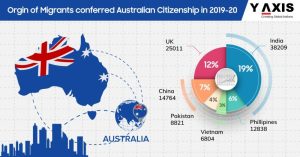 With the recent rise, “India has moved past China and New Zealand to become the third largest country of birth behind Australia and England,” a news release by the bureau noted. In the previous census recorded in 2016 India was the fifth largest country of birth.
With the recent rise, “India has moved past China and New Zealand to become the third largest country of birth behind Australia and England,” a news release by the bureau noted. In the previous census recorded in 2016 India was the fifth largest country of birth.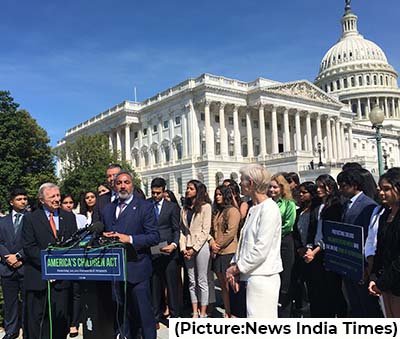 Immigration Forum notes that “As a result of being Documented Dreamers, these children are left out of policies and solutions meant for Dreamers because they are technically not undocumented. This leaves them with
Immigration Forum notes that “As a result of being Documented Dreamers, these children are left out of policies and solutions meant for Dreamers because they are technically not undocumented. This leaves them with 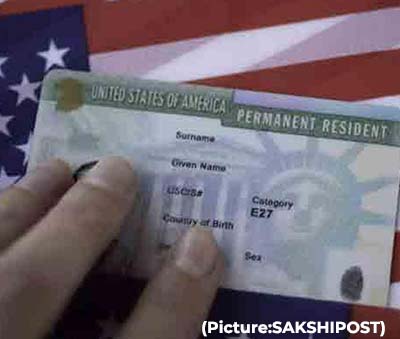 The recommendations of the President’s Advisory Commission on Asian Americans, Native Hawaiians, and Pacific Islanders (PACAANHPI) are to be sent to the White House now for approval. If adopted, it is is likely to bring cheers to the hundreds and thousands of Indian-Americans and those waiting, some even for decades, for a Green Card.
The recommendations of the President’s Advisory Commission on Asian Americans, Native Hawaiians, and Pacific Islanders (PACAANHPI) are to be sent to the White House now for approval. If adopted, it is is likely to bring cheers to the hundreds and thousands of Indian-Americans and those waiting, some even for decades, for a Green Card.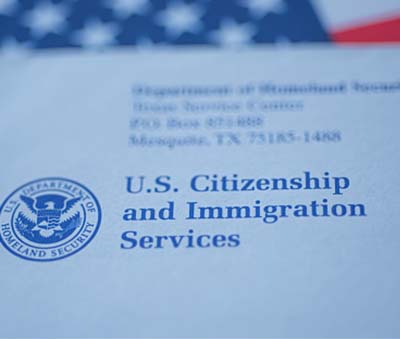 Now, an AOS applicant, or an eligible H-4 spouse, or L-2 spouse among other eligible EAD applicants, can be assured that there will be minimal concern of an employment-gap in their work authorization as they await their renewed EAD cards to arrive, Kim explains.
Now, an AOS applicant, or an eligible H-4 spouse, or L-2 spouse among other eligible EAD applicants, can be assured that there will be minimal concern of an employment-gap in their work authorization as they await their renewed EAD cards to arrive, Kim explains.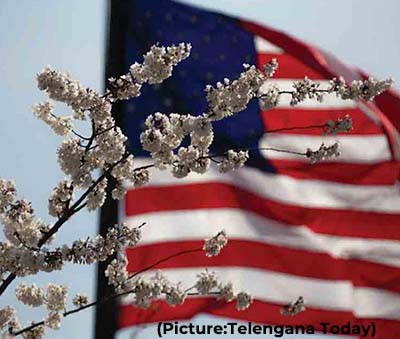 The US approved 407,071 H-1B petitions in 2021 and 301,616 of them 74.1 per cent were for Indian workers, according to the latest report on this topic released recently by the Department of Homeland Security, the government agency that oversees immigration.
The US approved 407,071 H-1B petitions in 2021 and 301,616 of them 74.1 per cent were for Indian workers, according to the latest report on this topic released recently by the Department of Homeland Security, the government agency that oversees immigration.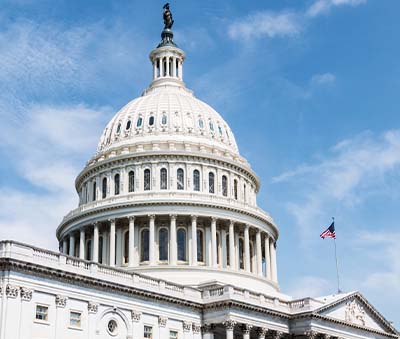 “By restoring the availability of immigrant visas lost due to COVID-19 or bureaucratic delay and enhancing green card processing, we are investing in our families and U.S. businesses,” said Chair Nadler. “Our immigration system is in desperate need of reform and this legislation is a vital step in the right direction. That is why I am proud to join Subcommittee Chair Lofgren in introducing the Jumpstart our Legal Immigration System Act, which will recapture some 400,000 family- and employment- based visas, create an accelerated path to adjustment of status for those already here, and give much need funds to U.S. Citizenship and Immigration Services to improve visa processing. This legislation, much of which was included in the House-passed version of the Build Back Better Act, is a no-brainer for our communities and economy.”
“By restoring the availability of immigrant visas lost due to COVID-19 or bureaucratic delay and enhancing green card processing, we are investing in our families and U.S. businesses,” said Chair Nadler. “Our immigration system is in desperate need of reform and this legislation is a vital step in the right direction. That is why I am proud to join Subcommittee Chair Lofgren in introducing the Jumpstart our Legal Immigration System Act, which will recapture some 400,000 family- and employment- based visas, create an accelerated path to adjustment of status for those already here, and give much need funds to U.S. Citizenship and Immigration Services to improve visa processing. This legislation, much of which was included in the House-passed version of the Build Back Better Act, is a no-brainer for our communities and economy.”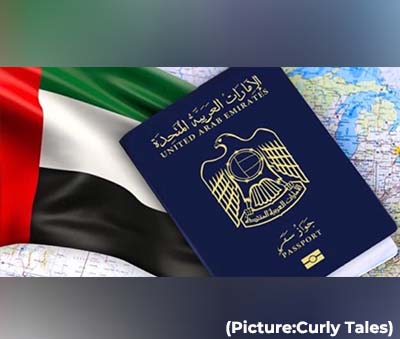 Additionally, the authority’s smart application provides the possibility to obtain an electronic copy of the Emirates ID upon request.
Additionally, the authority’s smart application provides the possibility to obtain an electronic copy of the Emirates ID upon request.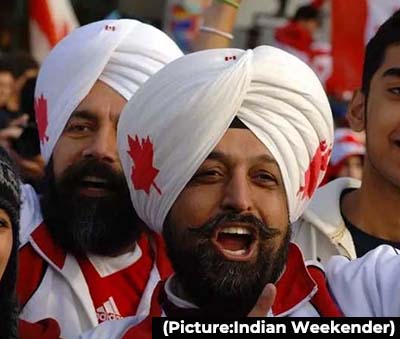 As per figures released by Immigration, Refugees and Citizenship Canada (IRCC), it also issued 450,000 study permit applications. As of December 31, 2021, of the approximately 622,000 foreign students in Canada, Indians number as high as 217,410.
As per figures released by Immigration, Refugees and Citizenship Canada (IRCC), it also issued 450,000 study permit applications. As of December 31, 2021, of the approximately 622,000 foreign students in Canada, Indians number as high as 217,410.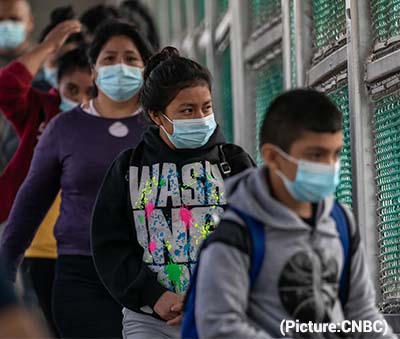 Exempting individuals with Ph.D.s in STEM fields from annual green card limits would relieve many from long wait times for permanent residence and (indirectly) reduce the decades-long waits for other highly skilled immigrants. The provision would allow U.S. employers to gain a significant competitive edge by offering the chance at permanent residence to outstanding researchers from around the world, including those early in their careers and engaging in cutting-edge work. (See
Exempting individuals with Ph.D.s in STEM fields from annual green card limits would relieve many from long wait times for permanent residence and (indirectly) reduce the decades-long waits for other highly skilled immigrants. The provision would allow U.S. employers to gain a significant competitive edge by offering the chance at permanent residence to outstanding researchers from around the world, including those early in their careers and engaging in cutting-edge work. (See  U.S. hospitals are struggling with a shortage of nurses that worsened as pandemic burnout led many to retire or leave their jobs. Meanwhile, coronavirus cases continue to rise and fall, placing tremendous pressure on the health care system. In California alone, there’s an estimated gap of 40,000 nurses, or 14% of the workforce, according to a recent
U.S. hospitals are struggling with a shortage of nurses that worsened as pandemic burnout led many to retire or leave their jobs. Meanwhile, coronavirus cases continue to rise and fall, placing tremendous pressure on the health care system. In California alone, there’s an estimated gap of 40,000 nurses, or 14% of the workforce, according to a recent  That travel ban does not apply to U.S. citizens and permanent residents, and it’s possible the ban could be lifted soon.
That travel ban does not apply to U.S. citizens and permanent residents, and it’s possible the ban could be lifted soon.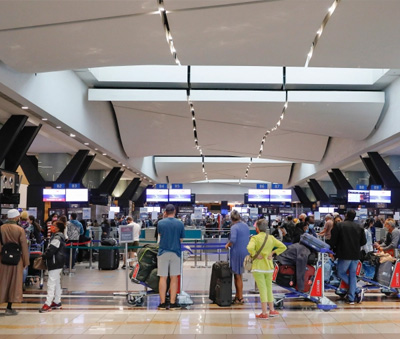 “On arrival, the passengers found to be symptomatic during screening shall be immediately isolated and taken to medical facility as per health protocol. If tested positive, their contacts shall be identified and managed as per laid down protocol,” said the updated guidelines.
“On arrival, the passengers found to be symptomatic during screening shall be immediately isolated and taken to medical facility as per health protocol. If tested positive, their contacts shall be identified and managed as per laid down protocol,” said the updated guidelines. Speaking on the occasion of the foundation laying stone ceremony of Noida International Airport here, PM Modi said, “Tourism of land-locked states like Uttar Pradesh will greatly benefit from the Noida International Airport. Now, pilgrims will be able to easily travel to temples and shrines in Uttar Pradesh.”
Speaking on the occasion of the foundation laying stone ceremony of Noida International Airport here, PM Modi said, “Tourism of land-locked states like Uttar Pradesh will greatly benefit from the Noida International Airport. Now, pilgrims will be able to easily travel to temples and shrines in Uttar Pradesh.”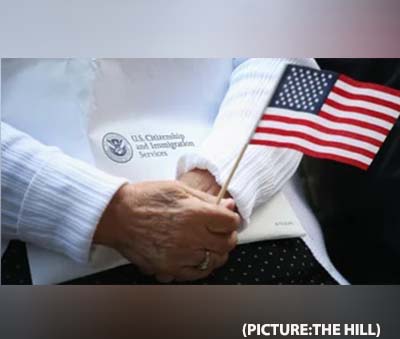 The Build Back Better Act includes long-term work permits and protections for seven million hardworking immigrant essential workers that will help prevent family separation, stabilize our workforce, boost our economy, and create jobs,” said Congressional Hispanic Caucus (CHC) Chair Raúl Ruiz (D-Calif.).
The Build Back Better Act includes long-term work permits and protections for seven million hardworking immigrant essential workers that will help prevent family separation, stabilize our workforce, boost our economy, and create jobs,” said Congressional Hispanic Caucus (CHC) Chair Raúl Ruiz (D-Calif.).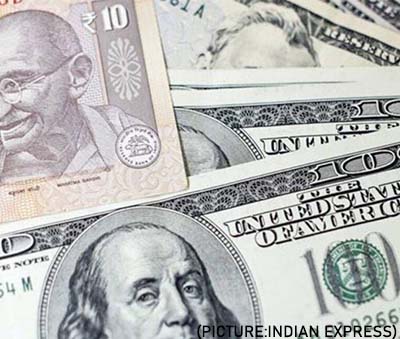 India is followed by China, Mexico, the Philippines, and Egypt, the report said. In India, remittances are projected to grow 3% in 2022 to $89.6 billion, reflecting a drop in overall migrant stock, as a large proportion of returnees from the Arab countries await return, it said.
India is followed by China, Mexico, the Philippines, and Egypt, the report said. In India, remittances are projected to grow 3% in 2022 to $89.6 billion, reflecting a drop in overall migrant stock, as a large proportion of returnees from the Arab countries await return, it said. “For H-4 spouses who have lawful status and merely need to renew their employment authorization, they will now enjoy an automatic extension of their authorization for 180 days after expiration should the agency fail to process their timely-filed applications,” said Bless.
“For H-4 spouses who have lawful status and merely need to renew their employment authorization, they will now enjoy an automatic extension of their authorization for 180 days after expiration should the agency fail to process their timely-filed applications,” said Bless.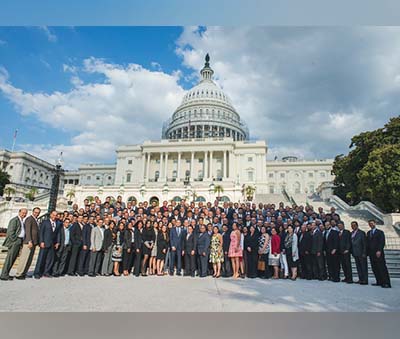 Lopez noted that while these programs do benefit hospitality companies, their overall impact is small. According to the Bureau of Labor Statistics, the hospitality industry had 1.58 million job openings in September, and the federal government caps the number of H-2B visas issued annually to 66,000.
Lopez noted that while these programs do benefit hospitality companies, their overall impact is small. According to the Bureau of Labor Statistics, the hospitality industry had 1.58 million job openings in September, and the federal government caps the number of H-2B visas issued annually to 66,000.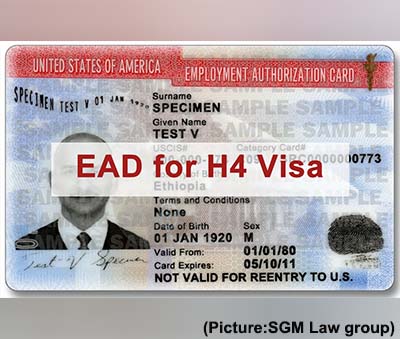 Now the administration has agreed to provide automatic work authorization permits to the spouses of H-1B visa holders, most of whom are Indian IT professionals.
Now the administration has agreed to provide automatic work authorization permits to the spouses of H-1B visa holders, most of whom are Indian IT professionals.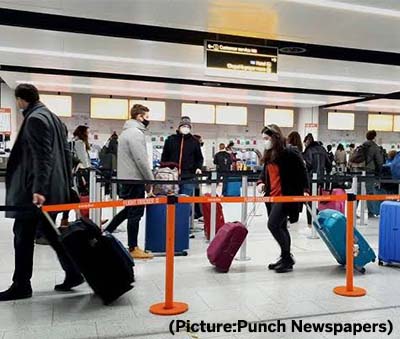 The United States is largely wide open, although there are some state and local restrictions that still apply. For example, there are mask mandates in Hawaii, Illinois, New Mexico, Nevada, Oregon and Washington. Washington, DC and Puerto Rico also require masks in indoor public spaces.
The United States is largely wide open, although there are some state and local restrictions that still apply. For example, there are mask mandates in Hawaii, Illinois, New Mexico, Nevada, Oregon and Washington. Washington, DC and Puerto Rico also require masks in indoor public spaces. Starting on November 8, non-citizen, non-immigrant air travelers to the United States will be required to be fully vaccinated and to provide proof of COVID-19 vaccination status prior to boarding an airplane to fly to the U.S., with only limited exceptions. The updated travel guidelines also include new protocols around testing. To further strengthen protections, unvaccinated travelers – whether U.S. Citizens, lawful permanent residents (LPRs), or the small number of excepted unvaccinated foreign nationals – will now need to test within one day of departure.
Starting on November 8, non-citizen, non-immigrant air travelers to the United States will be required to be fully vaccinated and to provide proof of COVID-19 vaccination status prior to boarding an airplane to fly to the U.S., with only limited exceptions. The updated travel guidelines also include new protocols around testing. To further strengthen protections, unvaccinated travelers – whether U.S. Citizens, lawful permanent residents (LPRs), or the small number of excepted unvaccinated foreign nationals – will now need to test within one day of departure. The guidelines released last week had said that travelers coming from a country with which India has reciprocal arrangements for mutual acceptance of WHO-approved Covid-19 vaccines would not have to self-isolate but would have to produce a negative RT-PCR test.
The guidelines released last week had said that travelers coming from a country with which India has reciprocal arrangements for mutual acceptance of WHO-approved Covid-19 vaccines would not have to self-isolate but would have to produce a negative RT-PCR test. The department said Oct. 19 that Facebook, headquartered in Menlo Park, Calif., will also pay up to $9.75 million to the workers it had discriminated against under a settlement it made with it and the Labor Department, reported IANS. “This settlement is an important step forward and means that U.S. workers will have a fair chance to learn about and apply for Facebook’s job opportunities,” Labor Department’s Indian American Solicitor Seema Nanda said.
The department said Oct. 19 that Facebook, headquartered in Menlo Park, Calif., will also pay up to $9.75 million to the workers it had discriminated against under a settlement it made with it and the Labor Department, reported IANS. “This settlement is an important step forward and means that U.S. workers will have a fair chance to learn about and apply for Facebook’s job opportunities,” Labor Department’s Indian American Solicitor Seema Nanda said. Sure enough, both Wages’s and her partner’s passports had expired during the
Sure enough, both Wages’s and her partner’s passports had expired during the  The move comes a year and a half after grant of tourist visas was suspended in the wake of Covid pandemic. The ministry said in a statement that the decision was taken following consultations with stakeholders like the Ministry of Health & Family Welfare, Ministry of External Affairs, Ministry of Civil Aviation, Ministry of Tourism and state governments.
The move comes a year and a half after grant of tourist visas was suspended in the wake of Covid pandemic. The ministry said in a statement that the decision was taken following consultations with stakeholders like the Ministry of Health & Family Welfare, Ministry of External Affairs, Ministry of Civil Aviation, Ministry of Tourism and state governments. The United Kingdom is easing its travel restrictions starting from October 11 allowing travellers from more countries to enter the UK. Indians were already allowed to travel to the UK but what changes from October 11 is that those who are vaccinated with both doses of Covishield will not require to undergo 10-day mandatory quarantine in the UK.
The United Kingdom is easing its travel restrictions starting from October 11 allowing travellers from more countries to enter the UK. Indians were already allowed to travel to the UK but what changes from October 11 is that those who are vaccinated with both doses of Covishield will not require to undergo 10-day mandatory quarantine in the UK.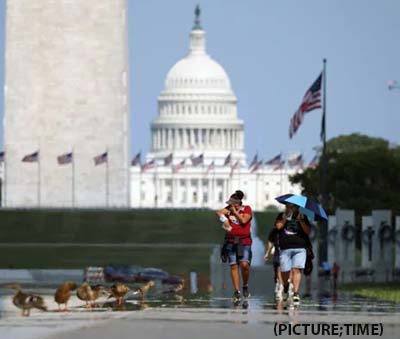 In other words, she said, lawmakers cannot squeeze giving eight million immigrants a pathway to legal citizenship into a legislative
In other words, she said, lawmakers cannot squeeze giving eight million immigrants a pathway to legal citizenship into a legislative 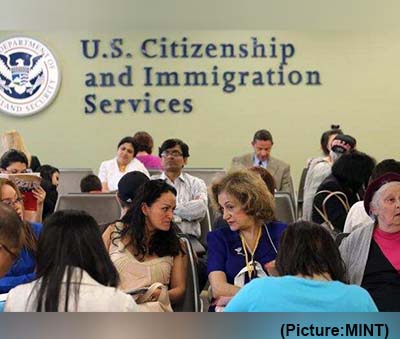 Under these quota rules, unused Green Cards in the Family-based categories are added to the Employment-based categories and vice versa. Typically, a very large percentage of Family-based Green Cards are issued by U.S. Consulates abroad (through the Immigrant Visa application process) and a very large percentage of Employment-based Green Cards are issued by the USCIS in the United States through the Adjustment of Status application process. Due to such restrictions, the American economy is unable to access the full international talent pool of high-skilled workers already present and working in the United States today – indeed, the very scientists, inventors, health care workers, entrepreneurs, and other professionals that give the United States its edge over its global competitors today, the lawmakers write.
Under these quota rules, unused Green Cards in the Family-based categories are added to the Employment-based categories and vice versa. Typically, a very large percentage of Family-based Green Cards are issued by U.S. Consulates abroad (through the Immigrant Visa application process) and a very large percentage of Employment-based Green Cards are issued by the USCIS in the United States through the Adjustment of Status application process. Due to such restrictions, the American economy is unable to access the full international talent pool of high-skilled workers already present and working in the United States today – indeed, the very scientists, inventors, health care workers, entrepreneurs, and other professionals that give the United States its edge over its global competitors today, the lawmakers write.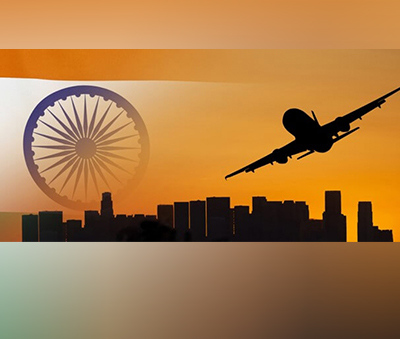 The restriction does not apply to international cargo operations. Exceptions are also made to international flights under travel bubble agreements or flights approved by the DGCA. India currently has travel bubble agreements with 28 countries, the Indian Civil Aviation Ministry website indicates. The DGCA also said that scheduled international flights might be allowed on selected routes on a case-to-case basis. Commercial international flights have remained suspended since March 23, 2020, to check the spread of the Covid-19 infection. The Indian government had initially imposed international travel restrictions in March 2020, which have since been prolonged by almost 18 months Special international flights were also operating under the ‘Vande Bharat Mission’ since May 2020 to bring home thousands of Indian nationals stranded abroad due to the
The restriction does not apply to international cargo operations. Exceptions are also made to international flights under travel bubble agreements or flights approved by the DGCA. India currently has travel bubble agreements with 28 countries, the Indian Civil Aviation Ministry website indicates. The DGCA also said that scheduled international flights might be allowed on selected routes on a case-to-case basis. Commercial international flights have remained suspended since March 23, 2020, to check the spread of the Covid-19 infection. The Indian government had initially imposed international travel restrictions in March 2020, which have since been prolonged by almost 18 months Special international flights were also operating under the ‘Vande Bharat Mission’ since May 2020 to bring home thousands of Indian nationals stranded abroad due to the  This is the first such attempt in the state where expatriates, and returnees, of a village have come together and mobilized capital for a business enterprise of this kind. The total investment of Rs 18 crore was raised from 207 people. Of these, 147 invested only Rs 1 lakh each. The price of a share was fixed at Rs 50,000, and an individual had to invest in at least two shares. There was a cap on the maximum investment as well – Rs 40 lakh per person. “The major highlight of the venture is that a large section of investors are ordinary people who have some small savings, a few lakh rupees, after years of toil in the Gulf. But for an initiative of this type, they would not have been able to be a part of a professional business venture,” said GTF Steels Chairman Mohammed Basheer Nadammal.
This is the first such attempt in the state where expatriates, and returnees, of a village have come together and mobilized capital for a business enterprise of this kind. The total investment of Rs 18 crore was raised from 207 people. Of these, 147 invested only Rs 1 lakh each. The price of a share was fixed at Rs 50,000, and an individual had to invest in at least two shares. There was a cap on the maximum investment as well – Rs 40 lakh per person. “The major highlight of the venture is that a large section of investors are ordinary people who have some small savings, a few lakh rupees, after years of toil in the Gulf. But for an initiative of this type, they would not have been able to be a part of a professional business venture,” said GTF Steels Chairman Mohammed Basheer Nadammal. From the baptism of Peter Pope (in the year Shakespeare died) to the death of Catherine of Bengal; the chronicles of Joseph Emin, Abu Taleb and Mirza Ihtishamuddin to Sake Dean Mahomet’s Hindoostane Coffee House; Gandhi’s experiments in Holborn to the recovery of the lost manuscript of Tagore’s Gitanjali in Baker Street; Jinnah’s trysts with Shakespeare to Nehru’s duels with destiny; Princess Sophia’s defiance of the royalty to Anand establishing the Progressive Writers’ Association in Soho; Aurobindo Ghose’s Victorian idylls to Subhas Chandra Bose’s interwar days; the four Indian politicians who sat at Westminster to the blood pacts for Pakistan; India in the shockwaves at Whitehall to India in the radiowaves at the BBC; the intrigues of India House and India League to hundreds of East Bengali restaurateurs seasoning curries and kebabs around Brick Lane�the book details all this and more. “Indians in London” is a scintillating adventure across the Thames, the Embankment, the Southwarks, Bloomsburys, Kensingtons, Piccadillys, Wembleys and Brick Lanes that saw a nation-a cultural, historical and literary revolution that redefined London over half a millennium of Indian migrations-reborn as independent India.
From the baptism of Peter Pope (in the year Shakespeare died) to the death of Catherine of Bengal; the chronicles of Joseph Emin, Abu Taleb and Mirza Ihtishamuddin to Sake Dean Mahomet’s Hindoostane Coffee House; Gandhi’s experiments in Holborn to the recovery of the lost manuscript of Tagore’s Gitanjali in Baker Street; Jinnah’s trysts with Shakespeare to Nehru’s duels with destiny; Princess Sophia’s defiance of the royalty to Anand establishing the Progressive Writers’ Association in Soho; Aurobindo Ghose’s Victorian idylls to Subhas Chandra Bose’s interwar days; the four Indian politicians who sat at Westminster to the blood pacts for Pakistan; India in the shockwaves at Whitehall to India in the radiowaves at the BBC; the intrigues of India House and India League to hundreds of East Bengali restaurateurs seasoning curries and kebabs around Brick Lane�the book details all this and more. “Indians in London” is a scintillating adventure across the Thames, the Embankment, the Southwarks, Bloomsburys, Kensingtons, Piccadillys, Wembleys and Brick Lanes that saw a nation-a cultural, historical and literary revolution that redefined London over half a millennium of Indian migrations-reborn as independent India.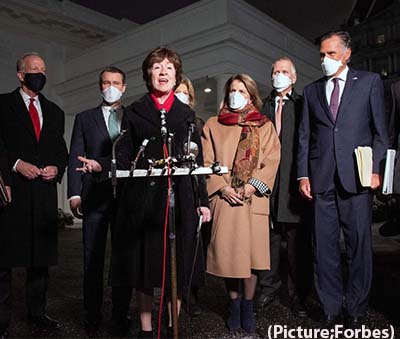 Lawmakers approved Democrats’ budget resolution on a party-line 50-49 vote, a crucial step for a president and party set on training the government’s fiscal might at assisting families, creating jobs and fighting climate change. Higher taxes on the wealthy and corporations would pay for much of it. Passage came despite an avalanche of Republican amendments intended to make their rivals pay a price in next year’s elections for control of Congress.
Lawmakers approved Democrats’ budget resolution on a party-line 50-49 vote, a crucial step for a president and party set on training the government’s fiscal might at assisting families, creating jobs and fighting climate change. Higher taxes on the wealthy and corporations would pay for much of it. Passage came despite an avalanche of Republican amendments intended to make their rivals pay a price in next year’s elections for control of Congress. Overall, the region’s population grew by 12.9% to 6.6 million, less than in past decades. Loudoun County led northern Virginia and the metro area with an increase of 38.4%, while in the Maryland suburbs of D.C., Howard County grew the most, 15.8%.
Overall, the region’s population grew by 12.9% to 6.6 million, less than in past decades. Loudoun County led northern Virginia and the metro area with an increase of 38.4%, while in the Maryland suburbs of D.C., Howard County grew the most, 15.8%. The figures released Thursday by the U.S. Census Bureau offered the most detailed portrait yet of how the country has changed since 2010 and will also be instrumental in redrawing the nation’s political maps.
The figures released Thursday by the U.S. Census Bureau offered the most detailed portrait yet of how the country has changed since 2010 and will also be instrumental in redrawing the nation’s political maps.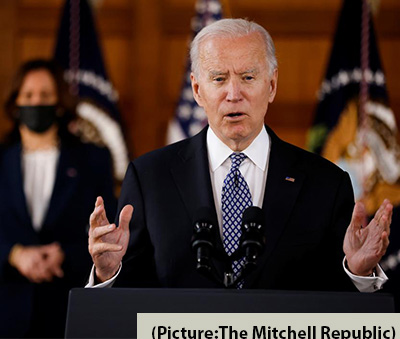 Biden and Harris said they backed achieving this by using the budget process known to get the necessary legislation for it through the Senate, where the Democrats do not have the 60 votes needed for passing a separate law for it.
Biden and Harris said they backed achieving this by using the budget process known to get the necessary legislation for it through the Senate, where the Democrats do not have the 60 votes needed for passing a separate law for it.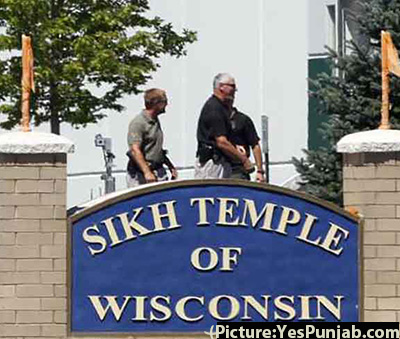 The commemoration took place on Thursday, August 5th during a meeting with representatives of the Asian, Hawaiian and Pacific Islander community during which they discussed combating hate crimes against Asians, the White House said.
The commemoration took place on Thursday, August 5th during a meeting with representatives of the Asian, Hawaiian and Pacific Islander community during which they discussed combating hate crimes against Asians, the White House said.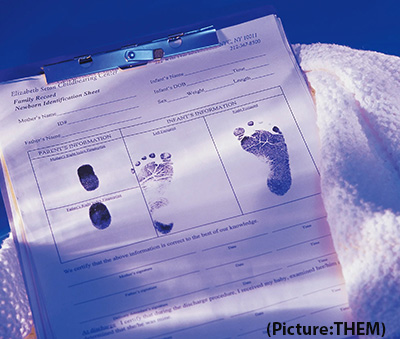 The recommendation comes because “assigning sex using a binary variable and placing it on the public portion of the birth certificate perpetuates a view that it is immutable,” the AMA’s LGBTQ+ advisory committee stated in a
The recommendation comes because “assigning sex using a binary variable and placing it on the public portion of the birth certificate perpetuates a view that it is immutable,” the AMA’s LGBTQ+ advisory committee stated in a 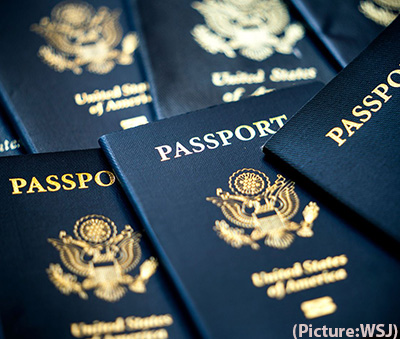 “Ultimately we realized our case worker was not able to make anything happen,” Wages says. “We’d spent hours refreshing the page to get appointments, and nothing was becoming available. We decided there was no way [we could still go on the trip].”
“Ultimately we realized our case worker was not able to make anything happen,” Wages says. “We’d spent hours refreshing the page to get appointments, and nothing was becoming available. We decided there was no way [we could still go on the trip].”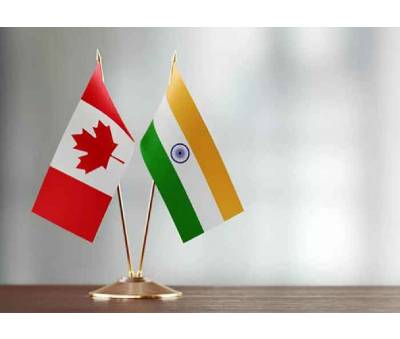 Since Indo-Canadians are one of the fastest growing communities in Canada, they will be the major beneficiaries of the program. Applications can be submitted online over a two-week period, starting September 20.
Since Indo-Canadians are one of the fastest growing communities in Canada, they will be the major beneficiaries of the program. Applications can be submitted online over a two-week period, starting September 20.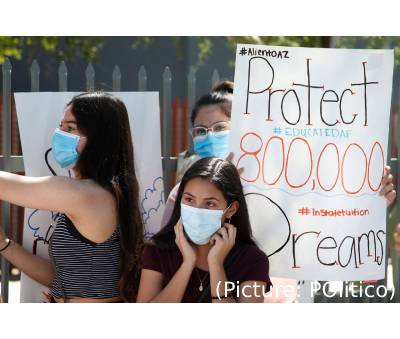 The Biden administration had no immediate response to Friday’s ruling. But the long-awaited knockdown spurred a political outcry and intensified pressure on the White House and Congress to pass an immigration measure this year. Immigrants brought to this country as children, known as “dreamers,” are among the most sympathetic of the 11 million immigrants in the United States illegally. Still, Republican and Democratic lawmakers have been unable to agree on whether to grant them legal status despite months of negotiations.Democrats are considering whether to use a budget reconciliation measure to take that action, a move that would require only a simple majority vote in the evenly divided Senate.
The Biden administration had no immediate response to Friday’s ruling. But the long-awaited knockdown spurred a political outcry and intensified pressure on the White House and Congress to pass an immigration measure this year. Immigrants brought to this country as children, known as “dreamers,” are among the most sympathetic of the 11 million immigrants in the United States illegally. Still, Republican and Democratic lawmakers have been unable to agree on whether to grant them legal status despite months of negotiations.Democrats are considering whether to use a budget reconciliation measure to take that action, a move that would require only a simple majority vote in the evenly divided Senate. “Over the last 15 years, the Conrad 30 program has brought more than 15,000 physicians to underserved areas, filling a critical need for quality care in our rural communities – a need that was highlighted during the coronavirus pandemic,” Klobuchar said in a statement. “Our bipartisan legislation would allow doctors to remain in the areas they serve, improving health care for families across the nation while retaining talent trained and educated here in the United States,” she added.
“Over the last 15 years, the Conrad 30 program has brought more than 15,000 physicians to underserved areas, filling a critical need for quality care in our rural communities – a need that was highlighted during the coronavirus pandemic,” Klobuchar said in a statement. “Our bipartisan legislation would allow doctors to remain in the areas they serve, improving health care for families across the nation while retaining talent trained and educated here in the United States,” she added. San Francisco Bay Area-based Prashant Prasad, a volunteer for Immigration Voice, a grass roots organization representing the high skilled immigrants in the US, explains why the current bill may be good news. He says, “We started advocating for a simple bill which would remove the per country caps for employment based green cards many years ago. The primary purpose of this was to ensure that employment based green cards are given on a first come first served basis.
San Francisco Bay Area-based Prashant Prasad, a volunteer for Immigration Voice, a grass roots organization representing the high skilled immigrants in the US, explains why the current bill may be good news. He says, “We started advocating for a simple bill which would remove the per country caps for employment based green cards many years ago. The primary purpose of this was to ensure that employment based green cards are given on a first come first served basis. Speaking on her first overseas trip since taking office, she said the journey north was dangerous and would mainly benefit people smugglers. Her comments, during a press conference after she met privately with Giammattei, underscored the challenge that remains even as Harris engages in substantive talks with the Guatemalan and Mexican presidents during a three-day visit to the region this week, her first foreign trip as vice president.“I want to emphasize that the goal of our work is to help Guatemalans find hope at home,” Harris said. “At the same time, I want to be clear to folks in this region who are thinking about making that dangerous trek to the United States-Mexico border: Do not come, do not come.”
Speaking on her first overseas trip since taking office, she said the journey north was dangerous and would mainly benefit people smugglers. Her comments, during a press conference after she met privately with Giammattei, underscored the challenge that remains even as Harris engages in substantive talks with the Guatemalan and Mexican presidents during a three-day visit to the region this week, her first foreign trip as vice president.“I want to emphasize that the goal of our work is to help Guatemalans find hope at home,” Harris said. “At the same time, I want to be clear to folks in this region who are thinking about making that dangerous trek to the United States-Mexico border: Do not come, do not come.” In a Level 4 travel advisory — the highest of its kind issued by the State Department — U.S. citizens were told “not to travel to India or to leave as soon as it is safe to do so.” There are 14 direct daily flights between India and the U.S. and other services that connect through Europe, the department said.
In a Level 4 travel advisory — the highest of its kind issued by the State Department — U.S. citizens were told “not to travel to India or to leave as soon as it is safe to do so.” There are 14 direct daily flights between India and the U.S. and other services that connect through Europe, the department said.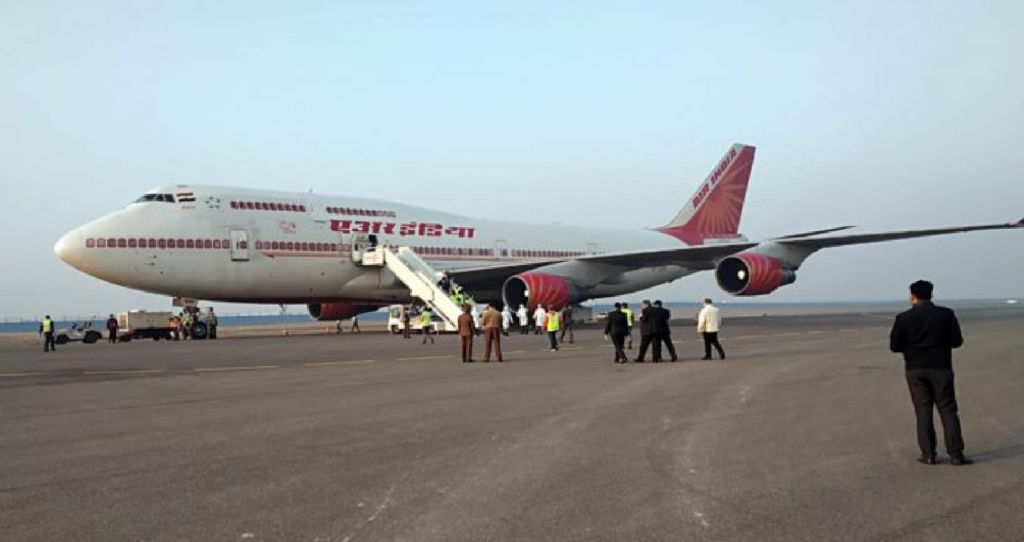 The restrictions cover South Africa, China, Iran, Brazil, Ireland, Britain and the 29 countries belonging to the common visa zone known as the Schengen Area. US citizens and legal residents and their immediate family members are exempt from the restrictions, as also are diplomats, but they are advised to follow precautions. They are asked to test themselves for COVID-19 between three and five days after arrival.
The restrictions cover South Africa, China, Iran, Brazil, Ireland, Britain and the 29 countries belonging to the common visa zone known as the Schengen Area. US citizens and legal residents and their immediate family members are exempt from the restrictions, as also are diplomats, but they are advised to follow precautions. They are asked to test themselves for COVID-19 between three and five days after arrival.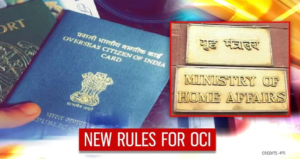 With a view to update the data regarding new passports obtained by the OCI cardholder, it has been decided that he/she shall upload a copy of the new passport containing his/her photo and also a latest photo on the online OCI portal, each time a new passport is issued up to 20 years of age and once after completing 50 years of age. These documents may be uploaded by the OCI cardholder within 3 months of receipt of the new passport.
With a view to update the data regarding new passports obtained by the OCI cardholder, it has been decided that he/she shall upload a copy of the new passport containing his/her photo and also a latest photo on the online OCI portal, each time a new passport is issued up to 20 years of age and once after completing 50 years of age. These documents may be uploaded by the OCI cardholder within 3 months of receipt of the new passport.